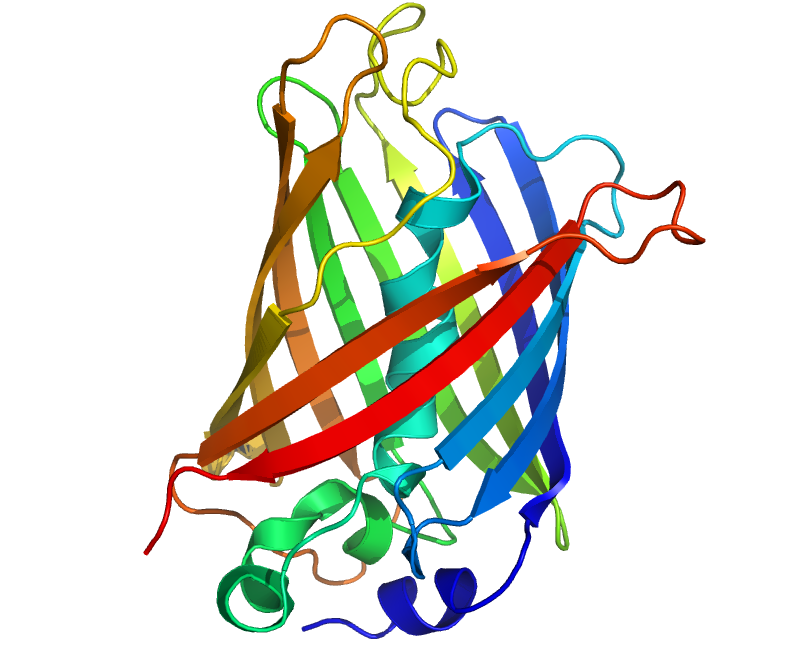Team:KULeuven/Project/Output
From 2008.igem.org
m |
|||
| (10 intermediate revisions not shown) | |||
| Line 1: | Line 1: | ||
| + | {{:Team:KULeuven/Tools/Styling}} | ||
| + | {{:Team:KULeuven/Tools/Scripting}} | ||
{{:Team:KULeuven/Tools/Header}} | {{:Team:KULeuven/Tools/Header}} | ||
| - | + | [[Image:pictogram_output.png|120px|right]] | |
==Output== | ==Output== | ||
| - | <div style="float: | + | <div style="float:right">[[Image:GFP.png|350px]]</div> |
We have been searching for an easy accessible output system, that could provide us qualitative and quantitative information in a quick and easy way. The choice for GFP was easily made. | We have been searching for an easy accessible output system, that could provide us qualitative and quantitative information in a quick and easy way. The choice for GFP was easily made. | ||
===BioBricks=== | ===BioBricks=== | ||
| - | [[Image:project_output.jpg| | + | [[Image:project_output.jpg|left]] |
| + | <br> | ||
| + | |||
===Components=== | ===Components=== | ||
| - | + | A GFP with a C-terminal [https://2008.igem.org/Team:KULeuven/Literature#LVA_tag LVA tag] for rapid degradation of the protein (Andersen et al, 1998) was chosen so that we can follow the output signal quickly in time. The Tet promoter ([http://partsregistry.org/Part:BBa_R0040 '''BBa_R0040''']) behaves as described in the [https://2008.igem.org/Team:KULeuven/Project/Input Input] section. For fine-tuning reasons, the RBS was chosen [http://partsregistry.org/Part:BBa_B0032 '''BBa_B0032'''] with a relative efficiency of 0,3. | |
===Action=== | ===Action=== | ||
| - | This is a very easy system. As the [https://2008.igem.org/Team:KULeuven/Project/Input | + | This is a very easy system. As the [https://2008.igem.org/Team:KULeuven/Project/Input Input] results in inactivation of the ''tet''R repressor, there is GFP production, proportional to the input signal. |
| + | |||
| + | ==References== | ||
| + | Appl Environ Microbiol. 1998 Jun;64(6):2240-6. | ||
| + | New unstable variants of green fluorescent protein for studies of transient gene expression in bacteria. | ||
| + | Andersen JB, Sternberg C, Poulsen LK, Bjorn SP, Givskov M, Molin S. | ||
| + | PMID: 9603842 | ||
{{:Team:KULeuven/Tools/Components}} | {{:Team:KULeuven/Tools/Components}} | ||
Latest revision as of 22:57, 29 October 2008
Contents |
Output
We have been searching for an easy accessible output system, that could provide us qualitative and quantitative information in a quick and easy way. The choice for GFP was easily made.
BioBricks
Components
A GFP with a C-terminal LVA tag for rapid degradation of the protein (Andersen et al, 1998) was chosen so that we can follow the output signal quickly in time. The Tet promoter ([http://partsregistry.org/Part:BBa_R0040 BBa_R0040]) behaves as described in the Input section. For fine-tuning reasons, the RBS was chosen [http://partsregistry.org/Part:BBa_B0032 BBa_B0032] with a relative efficiency of 0,3.
Action
This is a very easy system. As the Input results in inactivation of the tetR repressor, there is GFP production, proportional to the input signal.
References
Appl Environ Microbiol. 1998 Jun;64(6):2240-6. New unstable variants of green fluorescent protein for studies of transient gene expression in bacteria. Andersen JB, Sternberg C, Poulsen LK, Bjorn SP, Givskov M, Molin S. PMID: 9603842
 "
"




 Input
Input Output
Output Filter
Filter InverTimer
InverTimer Reset
Reset Cell Death
Cell Death Memory
Memory